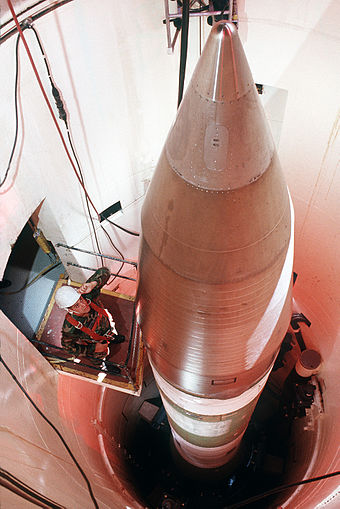Nuclear Weapons 711 - Questioning The Need For Silo-Based Minuteman III ICBMs - Part 1 of 3 Parts
Minuteman_III_in_silo_1989.jpg

Part 1 of 2 Parts
The U.S. is working on modernizing and expanding its nuclear arsenal. This project includes replacing four hundred Minuteman III missiles with a new set of “Ground-Based Strategic Deterrent” missiles and their associated facilities. The cost for this upgrade is a hefty eighty-five billion dollars and, giving the history of nuclear weapon development, there will probably be substantial cost overruns. If these silo-based intercontinental ballistic missiles (ICBMs) deter possible nuclear attacks that would take millions of lives, then they are certainly worth the high cost. However, if they are likely to cause massive numbers of casualties, then they will be very expensive even if their cost was zero.
The primary justification for silo-based ICBMs is that Russia would expend a large number of their nuclear warheads to take them out. Estimates by defense analysists suggest that it would take two Russian warheads to destroy each of the four hundred U.S. ICBMs. Each U.S. ICBM only contains one warhead. Now this two for one calculation for destruction of four hundred U.S. warheads might seem like a good deal but the impact of eight hundred Russian warheads in the middle of the U.S. must be included in the calculations.
There would be immediate and immense local casualties and destruction. After the initial blasts, there would be a huge amount of radioactive fallout spreading eastward from the ICBM silos in Colorado, Montana, Nebraska, North Dakota and Wyoming which could potentially kill millions of civilians. It is estimated that the long-term radioactive contamination would be at least ten times greater than the fallout from the Chernobyl accident. This would render a huge section of the U.S. Midwest uninhabitable for generations.
Some proponents of ICBMs might say that this is still a good “deal” because there would be many fewer Russian warheads to hit targets in the rest of the country. If the New START treaty is signed, even after expending eight hundred warheads, the Russians would still have almost eight hundred warheads left. This would certainly be enough to kill tens of millions of U.S. citizens and utterly destroy U.S. society.
The further impact of such a Russian mass nuclear attack would be to devastate the global climate and cause a nuclear winter. This could result in the death of a billion people because of the disruption of agriculture. This would not be limited to the U.S. and Russia (assuming that the U.S. counterattacks) but would extend across the entire northern hemisphere. Considering these probably result of a major nuclear exchange between the U.S. and Russia, it becomes apparent that the theory that U.S. ICBMs would protect us by “soaking” up Russian warheads is just false.
A second argument presented by supporters of silo-based ICBMs is that the U.S. needs the “fast-launch” that ICBMs make possible. However, the U.S. can launch missiles from submarines almost as quickly as they can launch missiles from silos. In addition, the submarines will be located closer to their targets in Russia and their missiles can arrive sooner than ICBMs from silos. In a war, submarines would be more than adequate to attack the strategic forces of Russia. Some U.S. ICBMs would have to fly over Russia to reach targets outside of Russia and this would make them vulnerable to antimissile defenses.
Please read Part 2